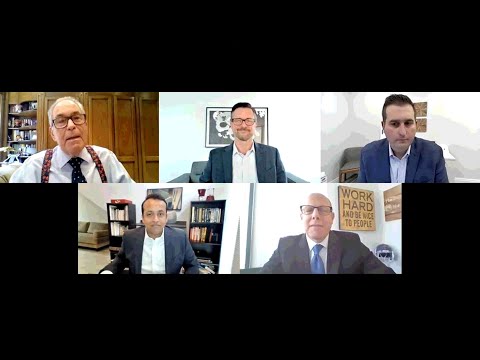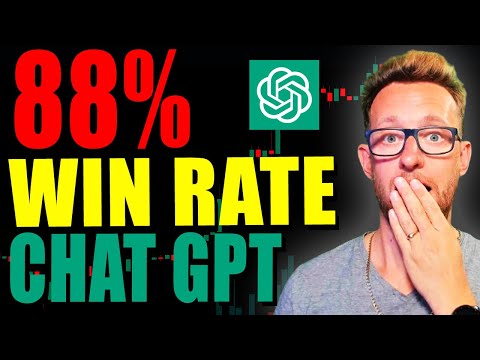What's Happening in Westchester & Connecticut | The Stoler Report-New York's Business Report

♪ [Theme Music] ♪ ♪ [Theme Music] ♪ >>> Michael: Wow! Lots of development taking place in Westchester and Connecticut. Who's doing it? Who's lending? Who's building? So today with the help of my executive producer, Joe Graziose, we have a dynamic group of individuals talking about developments taking place, specifically in Westchester and Connecticut. We may even discuss New Jersey since all of the guys seem to be involved a little bit in New Jersey. My guests today include somebody who joined me in 2007. Greg Belew, who's the divisional president for New York Metro at Lennar Multifamily Communities. Joe Graziose, who's the senior vice president residential development at RXR Realty.
Prithvi Mohan, who's the vice president commercial real estate Capital One. And last but not least, Russell Tepper, who's the senior managing develop director, New York, New Jersey, Connecticut, Pennsylvania for Mill Creek Residential. Thanks for all being here. And Joe, thank you very much for bringing all these people together.
>>> Joe: Moy pleasure, Michael. >>> Michael: So, I'm going to start a little different. The guy who has the money, why he's lending in Westchester and Stanford? >>> Prithvi: Yeah. Thanks Mike. Thanks for having me. You know, I think, it's something we're going to touch on throughout the show, I'm sure. But yeah, the transit oriented story
isn't a new one. It's been around for quite some time. As long as they're major metros and affordability issues, you have certainly development and, you know, the demand, to live sort of outside of those cities. So, you know, as we looked at, you know, take Westchester an example, I think you have a tremendous story there with respect to the transit. But even
beyond that, you know, the lack of supply for a very, you know, extended period of time, still relative value, you know, if you think about other, you know, transit oriented stops that people could be at in and call it a Jersey or a Brooklyn. And finally, I think just a, you know, increasingly attractive Grand Central and sort of Park Avenue hub, I think, put those things together, I think there's a tremendous, you know, still a runway for growth, even despite some of the, you know, the recent supply in the market. So, you know, we looked to that as we look at any other market and understand, you know, what's the structural attractiveness and, you know, how do we play there? And I think we like what we see. >>> Michael: I think this is a question for Greg and Russell. You, you, you both national
operations. You have operations in many states, all different cities. Okay? How co-- how companies decide to concentrate specifically in Westchester and certain parts of Stanford? You know, as for this market over there, as opposed to spending more time in New Jersey, which I know Russell, you are rather active in New Jersey in different places. But why Westchester today? Greg? Russell? >>> Greg: I guess since I got called up first, I'll go. But we were like, we're, we're definitely involved pretty heavily in New Jersey. No question. But Westchester County and Fairfield County are also very attractive. You know, our,
our business plan, for some time now, has been to operate a little bit more around the periphery of New York City. I mean, we, we like a lot of developers spend time in New York City. But I, I would say as of a couple of years ago, in our, in our minds, it just became less and less attractive as the regulatory risk increased, as we saw, of course, problems arising in the pandemic. But our, our approach really has been more to find locations that are more, you know, quasi-urban. You know, call it urban-suburban, and focus on those areas where you really do have a solid commuter population. You have arts, entertainment, restaurants, et
cetera. You know, business centers with, with employees, a lot of daytime populations. And as you mentioned, you know, these areas really do provide great value in a, in a good cost alternative to New York City. So, when you have these, these towns, like White Plains, or like Stanford as an example, that have easy commutes into the city for those that are commuting into the city, even, you know, now on, on a more limited basis, it's still a great value proposition and just makes a ton of sense. And on top of everything else, it's less
competitive to find sites. It's a little bit easier to make the deals pencil, et cetera. So, I think that there are a lot of reasons for us as a national developer why that, that is a, a solid business plan. >>> Michael: Russell? >>> Russell: Sure. Thank you for having me this morning. I would
say that the most important attraction for us are the people, the, the labor pool, those that want to live in New York Metro area and do not want to necessarily live in New York City and don't necessarily work in New York City, but want to be close to the hub, where there's enormous labor opportunities, enormous capital investment, great cultural opportunity, significant diversity and focus on social governance, while there's also a balance of economic diversity, fiscal growth and a real desire to invest, work and live in this, in this area. We've been developing in this area for many, many, many years, as we have in, as you mentioned, other sub-markets around the country. But the New York Metro area has been very well-insulated from volatility in the economy and remains a, a very large focus for Mill Creek. >>> Michael: That's very interesting looking at your websites, many of you are, as I said, in Westchester and also in, in Stanford. Some of you have been involved in Long Island. But it doesn't look like too many of you have been involved with New York City specifically, with the exception of RXR. What, what, why do you prefer the suburbs as opposed to
New York City? >>> Russell: We actually are working on one particular development opportunity in one of the outer boroughs. But to your point, Michael, it has not been a primary focus of ours. New York City is another world onto its own, as it relates to real estate development and the risk adjusted returns and decisions that need to be made in certain timely fashions in New York City that don't exist in Northern New Jersey or on Long Island or in Westchester County or elsewhere in Connecticut as well. So, our investment model prefers that we are purchasing property and developing it when entitlements are in place and we have, have much more clarity as to what the development is going to cost to develop and confidence about the returns that it will generate. And in New York City, that set of metrics doesn't always exist. And so, we've been really, really successful developing outside of New York City and New York City has not been a primary focus. I would
say though, looking forward, New York City will actually be a greater focus for Mill Creek. Maybe not necessarily in Manhattan, but certainly in Brooklyn and Queens and Staten Island. >>> Michael: Okay. Let me pose the next question to Joe. I mean the master development plan -- let's talk about what RXR became the master developer and what its effect has done for RXR and other developers who've been building in New Rochelle. >>> Joe: Sure. Well, thank you Mike, for having us on today. I
think the New Rochelle master development agreement that RXR worked on with the city of New Rochelle back in 2014 and 2015, really set the tone for public private partnerships in Westchester County and a lot of the outer boroughs and in particular, the suburban market. As we went through that rezoning with this, with the city of New Rochelle, what we quickly realized was there was an absolute need for additional suburban housing in these metro areas. In particular, places like New Rochelle that are very transit oriented, very close to attractions in Westchester County, but very close in proximity to Manhattan. And through that partnership with the city, many of us are developing in New Rochelle presently, we've had a lot of success in New Rochelle with our first development in 360 Huguenot, and we have another development that will, that will come to market in the first quarter of next year, followed by a handful of other sites that we're working on. And I, and I think that that opportunity to grow within the city of New Rochelle and other municipalities in that hand-in-hand process with -- with local government has made a tremendous success for both RXR and other developers. And to Russell's point earlier, we, we
found it a lot easier to navigate through the channels in these smaller municipalities than you would be able to places like New York City. And I think there's an opportunity there for both developers and the community to capitalize on those opportunities and bring and bring housing for, for all in, in these municipalities. And that means market rate housing, Michael, and that also means affordable housing and, and, and we've been in that space as well. >>> Michael: Let's bring up the subject of affordable housing, because you know, New York City doesn't have enough affordable housing and definitely Westchester doesn't. Are there
requirements, Greg and Russell and Joe, in certain of the communities to build a portion of the units affordable? >>> Russell: In New Rochelle, a certain percentage of the apartment homes that we develop are affordable, to add a certain percentage of AMI. And we strongly believe that that's an important aspect of, of new developments in the New York Metro, and frankly, throughout the country. To be able to provide housing, which is so under supplied throughout the country and in our area, but to supply housing that meets a wide range of income levels and family types is really important to us. And so, there is a percentage of the homes that are affordable. Sometimes it ranges anywhere from 10 to as high as 20% of community. >>> Greg: Yeah, we, we always see affordable requirements. I
think that the trend that we're seeing though, is that a lot of municipalities are becoming more aggressive with -- asks. And in a lot of cases, these more aggressive requirements. Say in the example of Yonkers, which, which came up somewhere recently. They wanted to go from a 10% mandate to a 20% mandate. But there was no offsetting tax breaks or anything else to help offset that. And Stanford recently increased their affordable mandate to 10%. So, what happens, when you see
those, those requirements increasing is that without some sort of other offsetting factors. In a lot of cases that can, that, that can blow up the deal. I mean, that can make a development, not economically viable. So instead of getting more affordable housing, they get zero affordable housing. And
for that matter, zero market rate housing, unless it's done in a smart way. And I think that in the case that came up recently in Yonkers, thankfully, the mayor had the foresight to veto the legislation that the city council put forward. But, you know, you're, you're seeing this crop up all over the place, whether it's New Jersey, Northern New Jersey, Westchester, Fairfield, whatever, it's, it's a, it's becoming more and more common. And I think that the
municipalities need to understand the math behind how these things work. I'm also the, the co-chair of the ULI Westchester Fairfield District Council. And one of the things that we do is we put on a program on a somewhat regular basis called urban plan and one of the things that we do through that is, it's sort of a workshop for public officials, where they are really provided with financial models and they can see very directly the impact of layering on all of these additional requirements onto the developments and how it can make them in feasible. So, I think it's important for everybody to recognize that, that, you know, everything has to stay somewhat in balance, in order to make these deals work. >>> Michael: So, I wanna go to the banker right now. Listening
to the discussion and reviewing the websites, it seems to me that White Plains, Yonkers, New Rochelle and Stanford are the major cities of interest of all four people. As a banker, how do you make a determination which community you're interested in lending to? >>> Prithvi: Yeah, that's a good question. You know, ultimately, you know, market selection is, you know, component of what we look at and sponsorship is very critical to us, in terms of both, you know, their, their experience more broadly and in those markets. And as you start thinking about, you know, the, an interesting point around, let's say Westchester, you look at the institutional ownership of that and, and sort of transaction volume in that market. That was maybe single
digits about five years ago, that's maybe half of what what's made up in that market. So, you, you sort of sort of follow a kind of big old cliche, but kind of follow the money with, you know, where the larger players are writing, writing their checks and, you know, look to that as some level of comfort. But in addition, I think, you know, the, the fact around sort of transit orientation, there's also, I think a point, you know, Russell made as well, is how does that market stand on its own, with respect to both connectivity to the nearby suburbs where perhaps some tenants either came from or, or hope to move to, as well as other forms of employment. So, I think, you know, obviously in, in, in west-- Westchester, the, the healthcare system and other sort of employers certainly, you know, increasing the appetite. So, I think a lot of that goes into our decision making. I wouldn't say there's any one
market that is, you know, above the rest. I think it comes down to like the, the economics, the project, the sponsorship, and, and how we sort of, you know, forecast the market. >>> Michael: What are the rents compared to White Plains, Yonkers, New Rochelle, and then to Jersey City? Even though I'm going through the other state, you know, since you guys are involved with Jersey City, how do you compare the rental rates? And then the next question is, how long is it taking you today to rent up the property? >>> Greg: Well, I'll, I'll say that we've seen leasing activity pick up substantially, you know, starting, you know, call it over the last four months roughly. You know, we've seen the absorption rate in new deals go up fairly dramatically. In
Stanford, as an example, I know some of the properties that are in lease up right now, whereas we would have expected ordinarily to see 20 to 25 units per month. We're seeing 40 to 45 units per month. So, it's really a, it's really pretty encouraging from what we're seeing. And I think that that's pretty consistent across markets. And I think that it is creating rank growth as well. I mean, we're, we're, we're seeing different properties able to push pricing.
>>> Russell: I would say that, clearly the pandemic had a major impact on rent growth over the past year and a half or so. But fast forward to now, rank growth is, is meaningful. Prospective residents acknowledge that the worries of the pandemic are far less than they used to be, and are now more considering, considering more, you know, change of home experience. And so, since many of the communities that we develop are for those that want to rent by choice, rather than by necessity, you know, delivering a home experience that is highly amenitized and is well located is really important and can achieve rent premiums that other communities might not. So, we've
seen considerably more leasing activity at all of our communities. And I would also say that it's a bit of a balancing act as to how quickly a community leases up. Because one strategy could be heads on beds. You, you are competing with many other developers that are all delivering new communities at the same time, and you want to not be lagging in the market. And so, you might control your rent growth in order to get more new residents in your community. And on the
flip side, you might be the only new game in town, where there's a lot of demand for your apartments and you want to control the occupancy through growing your rents. And we've employed both of those strategies and hybrids of both of those strategies, depending upon what the local condition is of the market. To lease 40 or 50 or 60 apartments a month for a community that might be, you know, somewhere between four and 550 apartments might be really important, because you don't want to lease a building in such a fashion whereby you are through your first initial lease year, and you're still leasing the new community while you have existing new residents renewing their leases. So, it's a balancing act.
>>> Michael: Here's, here's the question. What's the profile of a person who's renting? You know, what's the age profile? Where do they work? You know, the situation? Are they working in Connecticut or Westchester? Are they working in Manhattan? Are they single? Are they families? What do you, what do you have there? >>> Joe: So, with what we're seeing at the RXR properties in particular in Fairfield County in Stanford is you have a much higher median age than you do in some of our Westchester product. And I think a lot of that has to do with this influx of folks that were moving out of Manhattan and actually looking for single family homes in Fairfield County. Single family home sales in Fairfield County have skyrocketed over the last 12 months. And what we've seen is an influx of empty nesters, selling their single-family homes and downsizing and moving into our apartment building in Stanford, Connecticut. And the,
and the, and the typical profile of those empty nesters are somewhere in their, in their, in their mid-fifties to sixties. Their, their children have gone off to college or have since graduated from college and are living on their own and either Westchester, Fairfield, or, or New York City or other parts of the country and they're working locally, either Stanford or somewhere in Fairfield County, whether it's New Haven or, or actually going down into Manhattan. So, you're seeing those, those that older demographic living in, in Fairfield County, where what we're seeing in places like New Rochelle and Yonkers are the younger professionals, the young families. Maybe they are a couple with their first
child, infant child or a toddler aged children moving out of Manhattan and into the suburban market with easy access to New York City, but at a diff-- perhaps at a different price point at a different point in their life where access to, to outdoors might not be as important to them, but having more space and the flexibility is, is important to them. As Greg mentioned, what we're seeing in, in Stanford with respect to rents and absorption is just phenomenal at our product at Atlantic Station West, where, where we're seeing 40 to 45 units absorbed on a monthly basis. And I think that that has a lot to do with the supply in some of these markets, where we're seeing rents slightly lower than White Plains in places like New Rochelle. And even slightly less in places like Yonkers as a result of the, of the supply in those markets.
We're fortunate enough to have one of the, one of the only new products in New Rochelle present day. And I think that we've set the market in New Rochelle for that, for that renter profile. And you'll, and you'll see renters in, in those buildings, in whether it's Yonkers or New Rochelle, in the healthcare professions or financial space, working in either Greenwich, Connecticut, or Westchester or Manhattan. >>> Michael: Russell? >>> Russell: The amazing factoid that I've learned over the years is that we all look to develop transit oriented communities that are close to the train and access to the city and there is an enormous percentage of our residents that do not get on the train. And it could be as high as 50% or more. We have such a
-- untapped pool of a higher middle and higher income prospective residents in the New York Metro area that don't necessarily work in New York City. They work in on the gold coast of, you know, live on the gold coast or work on the gold coast and Northern New Jersey. People that live on Long Island have lived there their entire lives and don't want to leave Long Island. And so, they also work on Long Island. There are
plenty of people to get on the train too, but being transit oriented is really important, but it is not necessary. That's why I and, and Greg and Joe are also developing in suburban markets that aren't right next door to a train. >>> Greg: In, in, in places like White Plains and, and Stanford as well, you have a fair number of residents who don't even work in the cities. They're actually commuting out and driving to the
surrounding areas for their jobs. They want to be a part of those urban-suburban locales, to really be able to take advantage of the lifestyle. You know, whether it's, you know, the restaurant and bar scene, social scene, that's where their friends are, whatever. But, you know, some of these municipalities have developed enough center of gravity that, that it actually draws, you know, it draws people in and, and they want to be a part of that. So, I think that that's a
trend that will continue. >>> Michael: One last question. Are we seeing any other towns like Hastings on the Hudson, Larchmont, Mamaroneck, you know, other, other cities where there's new development taking place in Westchester? >>> Russell: There's Sleepy Hollow for an example, Bronxville. There's lots of communities in Westchester County that would like to see more development occur. And I think they are looking very closely -- Porchester is another example. I think they're looking very closely at the model that New Rochelle has created for permitting development in a, in a thoughtful way that is -- that promotes fiscal growth without compromising the infrastructure that exists in their community.
>>> Michael: As I always like with my crystal apple over here, it looks bright for the Westchester, Stanford development. And I think people are definitely going to be moving to properties, matter of fact, owned and operated by the individuals here. I'd like to thank Greg, Joe, Prithvi and Russell, and I'll see you next week. ♪ [Theme Music] ♪
2021-08-12 22:15


